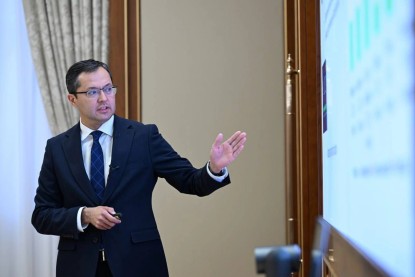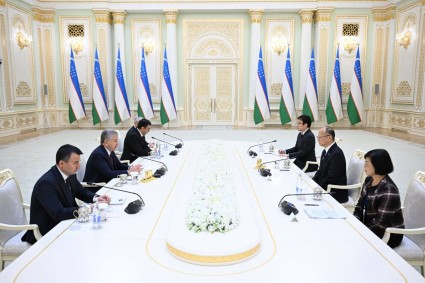The Moscow Exchange plans to launch trading in three new currencies, one of them could be the Uzbek soum, sources told RBC.
The Moscow Exchange plans to expand the list of currencies available on its platform in the near future. One of them should be the dirham, the currency of the United Arab Emirates (UAE), three sources in the financial market told RBC.
Reportedly, the launch of trading in the Emirati dirham, Armenian dram and Uzbek soum is being discussed.
Now the exchange of the ruble for 10 foreign currencies is available on the platform: US dollar, euro, Turkish lira, Hong Kong dollar, Belarusian ruble, Kazakh tenge, Swiss franc, British pound, Japanese yen and Chinese yuan.
RBC's source considers the expansion of the list of available currencies a "logical step", since the turnover on the exchange has fallen. The average daily trading volume in the dollar-ruble pair in April 2022 topped 81.5 billion rubles, in April 2021 - 242.9 billion rubles.
The sharp reduction is due to the ban on transactions with Russian securities for non-residents. Earlier, the 30% commission for the purchase of currency on the stock exchange also influenced the decrease in trading volume, then it was reduced and canceled in early April.
Alexei Bushuev, an independent financial market analyst, told Kommersant that under the sanctions, the authorities were trying to rebuild the economy towards alternative currencies.
“Almost complete isolation for Russia's international operations on the dollar and the euro used to be obvious and did not require new currencies. In the new defragmented world, we need to rebuild trade relations, and if before it was primarily financial transactions, now it is trade. Big banks, central banks can become the main players. In addition, foreign money on the Moscow Exchange is a powerful demonstration of support for relations with Russia,” he said.
Sergey Khestanov, macroeconomic adviser to the CEO of Otkritie Investments, noted that after foreign companies began to leave the Russian market, the authorities introduced parallel imports, that is, they allowed certain goods to be imported without the consent of the copyright holders. However, supplies go through third countries.
“This requires sufficient liquidity for the ruble pair plus the currency of the country that is supposed to be used for parallel imports. If the Chinese yuan is highly liquid on the stock exchange, then other currencies are not very liquid. As the demand for transactions with this money grows, liquidity is likely to increase,” he said.
He believes that the implementation of this scenario will depend on the sanctions policy.
“So far, the states through which supplies go are not subjected to some kind of severe pressure with the help of secondary measures. On the other hand, it can be assumed that if large volumes of parallel imports go through some specific countries, then they may face secondary sanctions. But for now, the idea of вАЛвАЛraising liquidity in some exotic currencies looks quite rational,” Sergey Khestanov said.













